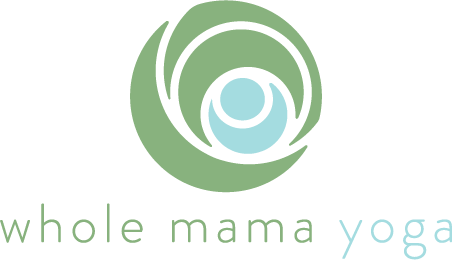How I'm Showing Up On My Mat
How I’m Showing Up On My Mat
Practicing Mindfulness During Yoga
This month, I’ve been thinking less about specific shape during my yoga practice, and more about how I show up on my mat.
I am, at heart, a multitasker. I grew up in New York, in an area where the pace was quick and small talk was minimal. Becoming a master juggler, able to walk, text, and talk at the same time felt like mastering a valuable skillset. It wasn’t until a number of years ago that I realized the toll it was taking.
What shifted my perspective? A practice you may well know-- mindfulness.
In my early 20s when I was working at a hospital in Boston. I would leave my workday feeling physically tense and mentally, I kept being pulled back into the seemingly endless to-do list.
I decided to really invest in my yoga practice. I got my local studios unlimited membership and started attending a few classes a week. The classes I took not only *finally* gave my lower back and hip flexors some relief after long days in a less-than-ergonomic office chair….they also gave me an hour or so of time in which all I had to do mentally was be there.
The shift felt pretty radical. As I practiced mindfulness more and more on my mat, its effects started to spill over into other parts of my life. I noticed that I felt less stressed, more intentional in my choices, and more connected to others when I let go of multitasking and planning and gave myself permission to be mindful.
So, what exactly is this whole mindfulness thing?
“Mindfulness” was defined by Jon Kabat-Zinn as, “paying attention, on purpose, in the present moment, and non-judgmentally.”
I love this definition. I mean I LOVE it. Why you ask? To me, it captures the most essential ingredients of a mindfulness practice in a short, sweet, and effective way. Let’s break it down.
1️. “paying attention…” - Mindfulness is an action, not an ideal state or natural way of being. Like most other behaviors— say, walking, driving, baking, speaking French—to get better at it, we need to commit to consistent and ongoing practice.
2️. “…on purpose…” - Things grab our attention constantly. Fire alarm? Screaming toddler? Terrifying news alert? New email? Thoughts about that conversation that really didn’t go how we planned? Yep. We pay attention to just about a million things a day. And that sort of paying attention isn’t necessarily mindfulness. Paying attention on purpose means making the choice to give our full attention to one specific thing, in the moment, again and again.
3. “…in the present moment…” - And, who finds themselves sometimes stuck in thoughts about the future or replaying the past? 🙋🏼♀️ Our minds naturally drift into thinking mode. We problem solve, prepare, process, and so on… all of which can be really important. But, whenever we’re in that mode, we’re missing out on what is happening right now. With mindfulness, we practice rooting ourselves to the present moment: the sights, sounds, smells, tastes, sensations. This can help us plug in to our being mode and get unstuck when thinking mode starts taking over.
4️. “…nonjudgmentally.” – I especially love (and let’s be honest, struggle with) this part. Nonjudgmentally is all about labeling what you are experiencing, right now, just as it is. No judgments, opinions, extras, etc. Dropping our judgments (the “should’ve, would’ve, could’ve”) and sticking to just the facts of this moment (i.e., what we can actually notice from our senses) helps us to see what is really going on with us, and around us. And that can opens the door to noticing what it is we really want and need in this moment, and being able to make intentional choices about what we do next, both on and off of our mats.
This definition of mindfulness—while short and succinct- is far from simple. Each piece could be the focus of an entire flow class, or series, and can take lots and lots of practice.
So, I invite you to consider: is there an aspect of mindfulness you’d like to practice this week?

